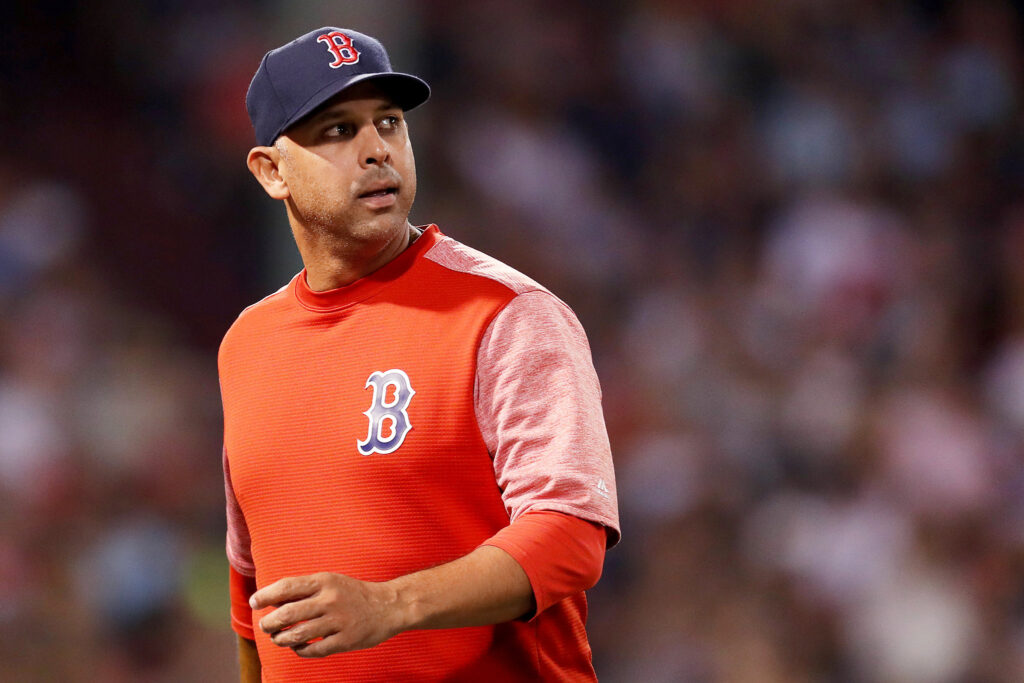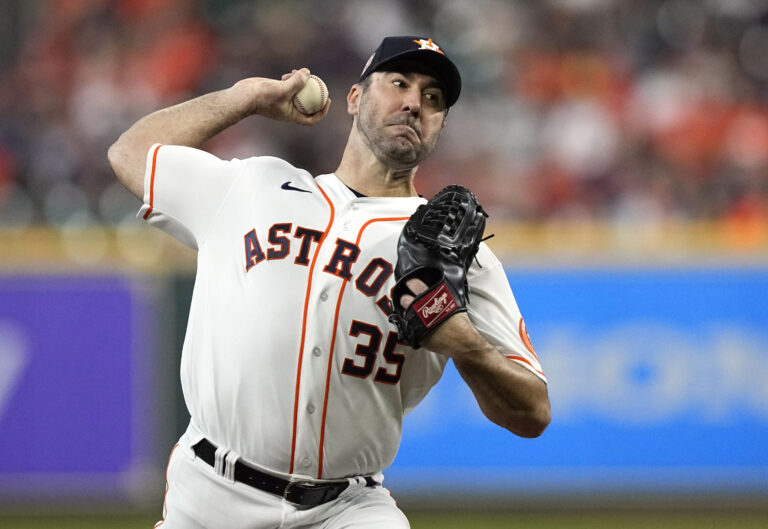Is the Length of MLB Spring Training Justified? A Deep Dive into Baseball’s Preseason
-
To read 10 min.
-
Published
-
Comments 0
- A Lingering Question: The Duration of Spring Training Debated Among Pros
- Evolution of Training: From Essential Preparation to Questioned Necessity
- Adapting to Modern Times: The Case for and Against a Shortened Spring
- Economic Implications: The Financial Stake in Maintaining Tradition
- Conclusion: Balancing Tradition with Modern Demands
- FAQs
Key Points
- Spring training is currently debated for its length, with some arguing it’s too long given modern athletes’ year-round fitness regimes, while others value its tradition and team-building aspects.
- Historical perspectives on spring training emphasize its role in player readiness, but advancements in sports science and player conditioning have led to questions about the need for such an extended preseason.
- Economic implications play a significant role in the debate over spring training’s duration, with significant financial benefits for host communities, teams, and the MLB from tourism and related activities.
- The debate over spring training reflects broader issues of balancing tradition with modern efficiency and player welfare, suggesting a need for ongoing dialogue and potential adaptation in its structure.
A Lingering Question: The Duration of Spring Training Debated Among Pros
As the spring sun bathes the lush fields of Florida and Arizona, a perennial debate simmers among the ranks of Major League Baseball: Is spring training unnecessarily protracted? This period, crucial in the tapestry of professional baseball, sees players gathering for a seven-week regimen that many argue could be significantly condensed without sacrificing the essence of preparation. The sentiment isn’t isolated; it’s a topic of conversation among players, coaches, and analysts alike. They compare the rigorous daily routines and repetitive exercises to a long, unvarying drive, lacking the dynamic excitement that the regular season unpredictably delivers. Yet, amidst this discourse, there’s a palpable reverence for the tradition and purpose that spring training embodies, setting the stage for a complex debate.

For some players, the extended duration of spring training represents an unnecessary stretch, a sentiment echoed by Alex Cora, the Boston Red Sox manager, who jests about the prospect of a shorter camp. This sentiment finds its roots in the predictable, monotonous structure of preseason training, which, for many, lacks the variegated challenges and environments encountered during the regular season. The question of necessity becomes even more poignant when considering the modern athlete’s year-round commitment to physical excellence, which arguably diminishes the need for an extensive period of preseason conditioning.
The perspective on spring training’s length, however, is not universally shared. There are players and coaches who defend the traditional schedule, arguing that it offers a crucial window for physical and tactical preparation, team building, and mental conditioning before the grueling regular season. This division of opinion highlights a broader conversation about the evolution of professional sports training, the balance between tradition and modern efficiency, and the individual needs of athletes within the team sport dynamic. As such, spring training remains a cherished, if occasionally contested, phase of baseball’s annual cycle, embodying the sport’s rich heritage and its ongoing dialogue with contemporary athletic demands.
Evolution of Training: From Essential Preparation to Questioned Necessity
The inception of spring training marked a period of essential preparation, a time when players would dust off their gloves and bats to shake off the offseason’s inertia. It was a time before the advent of sophisticated training regimes and nutritional plans, when players relied on this preseason to regain their form. However, as the sport has evolved, so too have the conditioning and preparation of its athletes. Today’s players are no longer the seasonal athletes of the past but year-round professionals, maintaining peak physical condition through rigorous off-season programs. This transformation challenges the traditional view of spring training as a period for getting into shape, suggesting instead a possible redundancy in its current extent.
The rigorous expectations for professional athletes, driven by competitive pressures and financial incentives, have rendered the classic spring training paradigm somewhat obsolete. Players now arrive at camp not to start their preparation but to fine-tune and synchronize with teammates. The sentiment among many within the league, including seasoned veterans, is that the essence of what needs to be accomplished during spring training could be achieved in a significantly shorter timeframe. This shift reflects broader trends in professional sports towards efficiency, data-driven preparation, and personalized training programs, emphasizing the need for MLB to reassess the structure and duration of its preseason activities.
Despite these arguments, spring training retains staunch defenders who see beyond the physical readiness of the players. They argue for the psychological and team-building benefits of the tradition, suggesting that the time spent together in Arizona and Florida fosters a sense of unity and shared purpose crucial for a successful season. These proponents of the status quo see spring training as more than just a period for physical preparation; it’s a rite of passage that renews the spirit of the team and its individual members. This duality of perspective underlines the complexity of evaluating spring training’s necessity, pointing to a debate that encompasses not only the physical but the intangible elements of baseball.
Adapting to Modern Times: The Case for and Against a Shortened Spring
The modern era of baseball, characterized by technological advancements, heightened player fitness, and evolving strategic approaches, has cast a new light on the spring training debate. Recent years, marked by disruptions such as the COVID-19 pandemic and labor disputes, have seen variations in the traditional spring training length, providing an inadvertent experiment in preseason preparation. These shortened seasons offered a glimpse into a potential future where spring training is more concise, prompting discussions on efficiency, player readiness, and injury prevention. The adjustments to the preseason schedule during these years raised questions about the optimal length of preparation time, challenging long-held assumptions about the necessity of a seven-week camp.
Comparisons with other major sports leagues in the United States further fuel the debate. The NFL, NHL, and NBA all operate with shorter preseason schedules, suggesting that extended preparation periods may not be as critical as once thought. This discrepancy highlights baseball’s unique adherence to tradition, juxtaposing the sport’s historical practices against a backdrop of modern sports science and athlete management. Proponents of a shorter spring training argue that a condensed schedule could maintain, or even enhance, player readiness while reducing the risk of preseason injuries, pointing to the adaptability of players and teams during the recent disrupted seasons as evidence.
Conversely, there are compelling arguments for maintaining the current length of spring training, rooted in both tradition and practicality. Beyond the physical preparation, spring training serves as a critical period for team building, player evaluation, and strategic planning. It offers a unique environment for nurturing young talent, assessing non-roster invitees, and solidifying team dynamics. Additionally, the economic impact of spring training on host communities in Florida and Arizona cannot be overlooked, with millions of dollars generated annually through tourism, hospitality, and local business engagement. This financial aspect adds another layer to the debate, underscoring the multifaceted impact of spring training beyond the baseball diamond.
#SpringBreakout begins TONIGHT ????⚾️
— MLBDevelops (@MLBDevelops) March 14, 2024
Over 30 MLB Develops & #BreakthroughBoyz???? alumni will represent‼️ pic.twitter.com/R1vhVOO9ot
Economic Implications: The Financial Stake in Maintaining Tradition
The economic dimension of spring training is a crucial factor in the debate over its duration, with implications that extend far beyond the baseball diamond. Each year, the preseason draws millions of fans to the warm climates of Florida and Arizona, generating significant revenue for local economies, the teams, and the MLB at large. This financial boon is rooted in tourism, as fans flock from colder regions to enjoy not only baseball but the local attractions, accommodations, and dining experiences. The economic impact reports from both the Cactus and Grapefruit Leagues underscore the substantial contributions to their respective states, highlighting spring training as not merely a preseason necessity but a vital economic event. For many communities, the annual influx of baseball fans is a cornerstone of their tourism industry, supporting jobs and local businesses in a symbiotic relationship with the sport.
Yet, the economic considerations extend to the players and teams as well. While major leaguers are well-compensated, spring training offers a unique challenge for younger, less established players who may rely on the stipends provided during this period. For teams, the profitability of spring training games, due to lower operational costs and the draw of seeing potential future stars at a lower price point, presents a compelling argument against shortening the season. The financial dynamics of spring training thus add a layer of complexity to any discussion about its duration, requiring a balance between economic benefits and the well-being of players and the quality of the game.
The potential repercussions of altering the spring training schedule on local economies, coupled with the MLB’s financial interests, suggest that any changes to the tradition would necessitate careful consideration and negotiation. Despite the arguments for efficiency and modernization, the economic stakes may well tip the balance in favor of maintaining the status quo, at least in the near term. However, the ongoing dialogue between stakeholders, including players, teams, communities, and fans, is essential in ensuring that the future of spring training aligns with the evolving landscape of professional sports, economic sustainability, and the cultural significance of baseball within American society.
Conclusion: Balancing Tradition with Modern Demands
The debate over the appropriate length of MLB spring training encapsulates a broader dialogue about the evolution of professional sports, the balance between tradition and innovation, and the multifaceted nature of baseball as both a sport and a cultural institution. As the game continues to evolve, so too must its practices, including those deeply rooted in history like spring training. The arguments for and against a shortened preseason reflect a range of considerations, from player preparedness and injury prevention to economic impacts and the sanctity of baseball traditions. This debate is not merely about optimizing a schedule but about how the sport adapts to the changing needs and realities of its players, fans, and communities.
As baseball moves forward, the key will be finding a middle ground that respects the heritage of the game while embracing the benefits of modern science, athlete care, and economic considerations. This could involve innovative approaches to spring training, such as tailored schedules for players, enhanced focus on health and safety, and even reimagined formats that maintain fan engagement and economic benefits while addressing the concerns of players and coaches. The future of spring training, therefore, lies not in a simple choice between tradition and change but in a thoughtful evolution that honors the past while looking towards a sustainable and vibrant future for the sport.
The ongoing conversation about spring training’s duration is emblematic of baseball’s enduring ability to reflect and adapt to broader societal changes. It underscores the sport’s capacity for self-examination and evolution, ensuring its continued relevance and vitality in American culture and beyond. As MLB navigates these discussions, the outcome will undoubtedly contribute to the rich tapestry of baseball history, marking another chapter in the sport’s ongoing dialogue between preserving its cherished traditions and embracing the opportunities of the modern era.
FAQs
- Why is the length of MLB spring training currently debated?
The debate stems from the modern athlete’s ability to maintain peak physical condition year-round, reducing the need for a lengthy preseason for conditioning. However, tradition, economic factors, and the benefits of team-building also play a role in supporting the current duration.
- What are the economic implications of changing the duration of spring training?
Shortening spring training could impact the local economies of host communities in Florida and Arizona, reducing income from tourism and potentially affecting the financial benefits teams and the MLB receive from the preseason period.
- How might MLB balance tradition with the need for modernization in regards to spring training?
MLB could explore innovative approaches to preseason training, such as tailored player schedules, focus on health and safety, and reimagined formats that maintain economic and fan engagement benefits while addressing player and coach concerns about the length of spring training.














